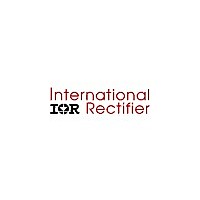IRPLHALO1E International Rectifier, IRPLHALO1E Datasheet - Page 15

IRPLHALO1E
Manufacturer Part Number
IRPLHALO1E
Description
KIT HALOGIN CONVERTER 100VA
Manufacturer
International Rectifier
Datasheet
1.IRPLHALO1E.pdf
(17 pages)
Specifications of IRPLHALO1E
Main Purpose
Lighting, Ballast Control
Utilized Ic / Part
IR2161
Lead Free Status / RoHS Status
Lead free / RoHS non-compliant
Secondary Attributes
-
Embedded
-
Primary Attributes
-
Other names
*IRPLHALO1E
IRPLHALO1E
to VCC due to the high dv/dt that occurs when the triac fires and the bus voltage rises rapidly from
zero to the AC line voltage. If the VCC voltage falls below UVLO- during the time when the triac in
the dimmer is off the soft start will not be initiated when voltage because the soft start circuit is not
reset until VCC drops approxmately 2V below UVLO-. This takes some time as the VCC capacitor
discharges very slowly during UVLO micro-power operation. The intermediate period is referred to
as Standby mode.
During dimming the voltage compensation circuit will cause a frequency shift upward at angles
°
above 90
because the peak voltage at CS will be reduced, however this will not have a noticeable
effect on the light output.
The problem associated with operation of Halogen convertors with triac dimmers is due to the fact
that after a triac has been fired it will conduct until the current falls below its holding current. If the
load is purely resistive (as in a filament lamp directly connected to the dimmer) this will naturally
happen at the end of the line voltage half cycle as the current has to fall to zero. In a Halogen
convertor it is necessary to place a capacitor and inductor at the AC input to comply with regulations
regarding EM conducted emissions. This means that when the line voltage falls to zero there could
still be some current flowing that is enough to keep the triac switched on and so the next cycle will
follow through and not be phase cut as required. This can happen intermittently resulting in flicker-
ing of the lamps. The way to avoid the problem is to ensure that the product has the smallest
possible filter capacitor CF and to state a minimum load for the convertor. This would be typically
one third of the maximum load to avoid problems of this kind.
EMC Issues
The IRPLHALO1E demo board has not been EMC tested although a filter capacitor CLF and inductor
LF are fitted. The capacitor value may not be increased beyond a certain point to improve filtering
as this causes problems when dimming with triac type phase cut dimmers, i.e. that the phase shift
introduced can prevent the triac current dropping below its holding current at the end of the line
voltage half cycle and so the dimmer no longer functions. In order to prevent this, the proportion of
resistive load presented to the dimmer output must be sufficient for the capacitance. A good rule of
thumb to apply is that no more than 1nF of capacitance should be used per Watt of the maximum
power rating of the convertor, e.g. for a 100W convertor, use a 100nF capacitor. This should allow
dimming to work even at reduced loads without any difficulties. The filter inductor value should be
increased to reduce the conducted emmissions below the limits of the applicable EMC standard.
The inductor should have a powdered Iron core rather than Ferrite as this can handle a much larger
current before saturating.
www.irf.com
15








